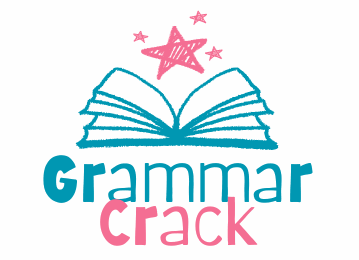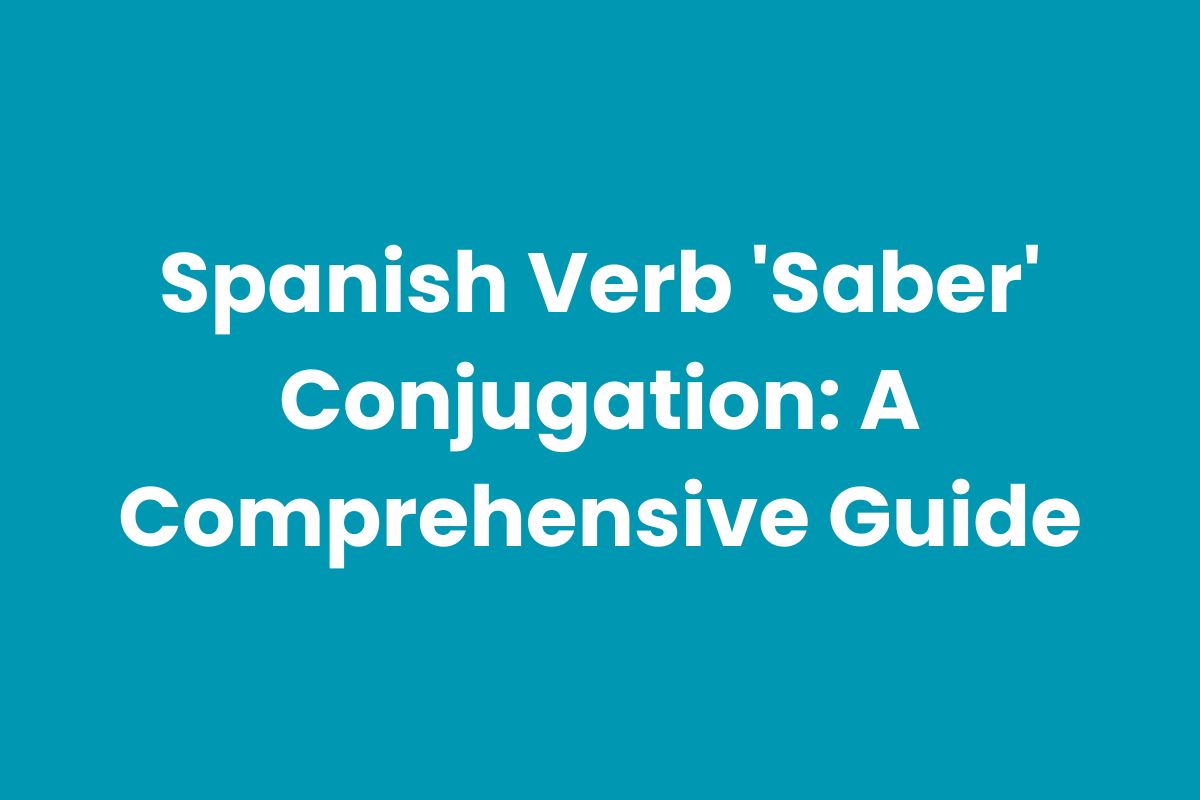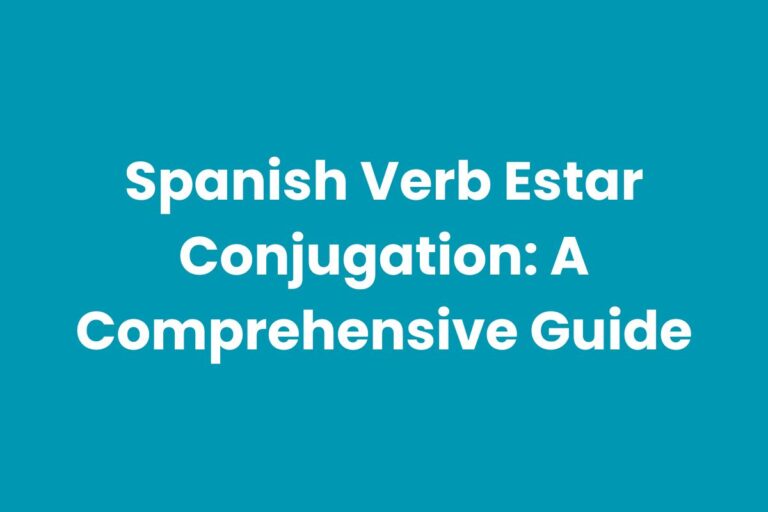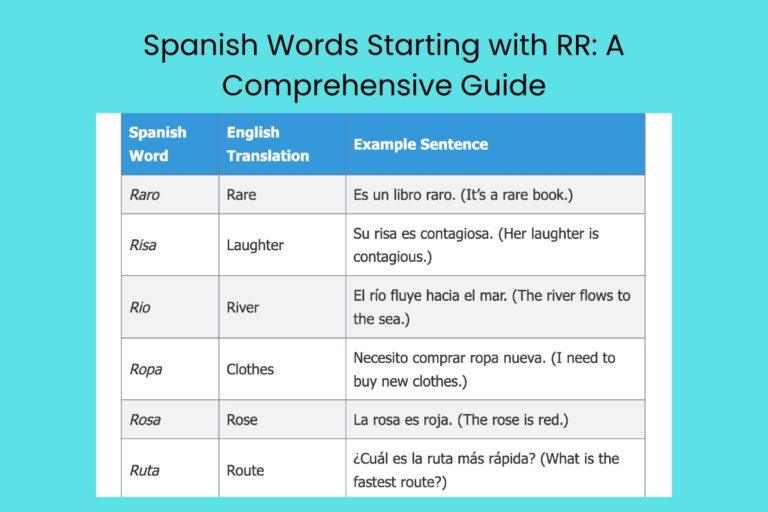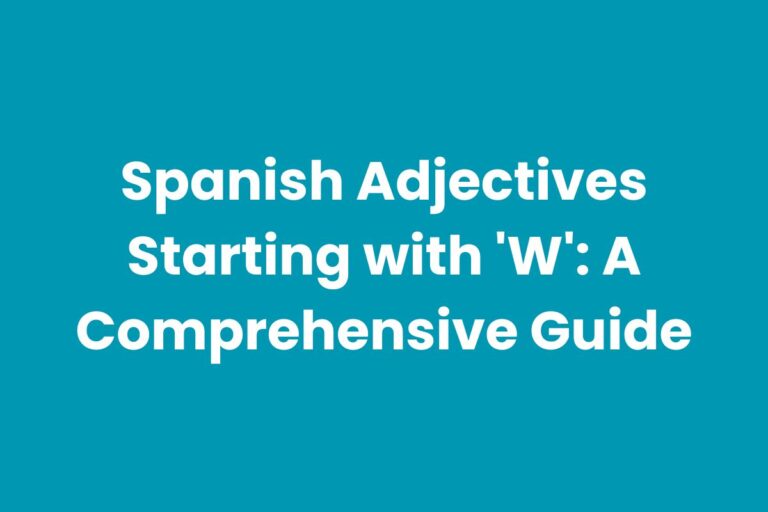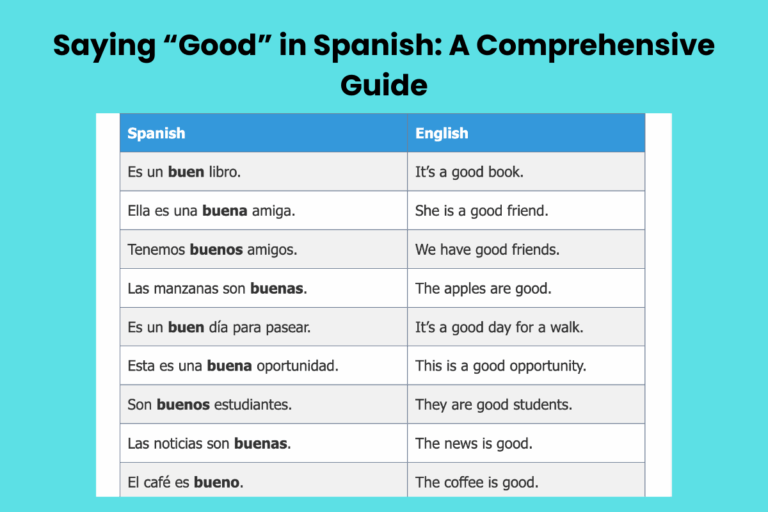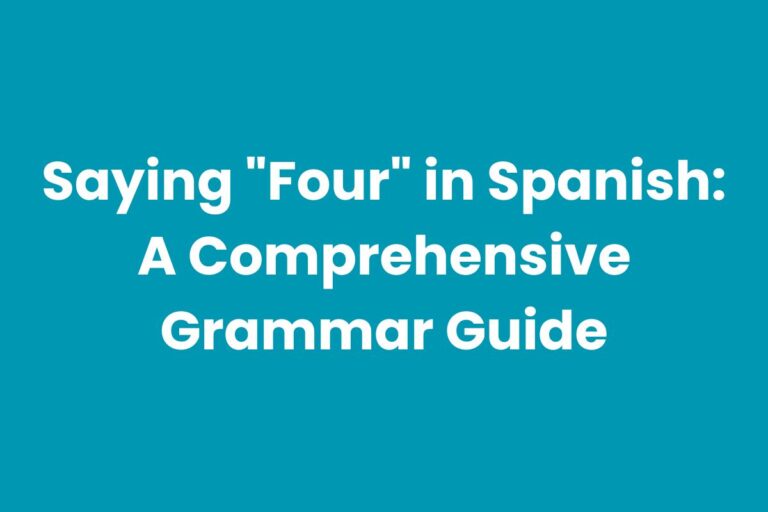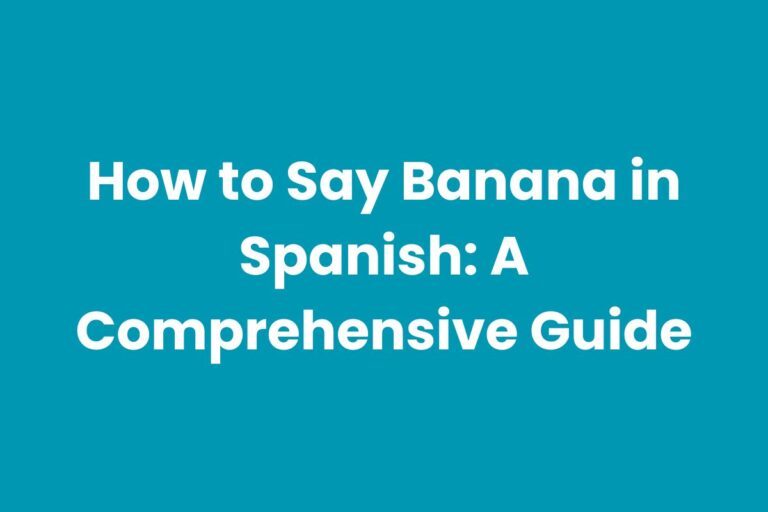Spanish Verb ‘Saber’ Conjugation: A Comprehensive Guide
Understanding the conjugation of the Spanish verb saber (to know) is crucial for effective communication in Spanish. Unlike its counterpart conocer, which means “to be acquainted with” or “to know” a person or place, saber is used to express knowledge of facts, information, or how to do something. Mastering saber allows you to accurately convey your understanding and abilities in diverse contexts. This guide will walk you through every aspect of saber conjugation, providing detailed explanations, examples, and practice exercises to solidify your understanding. Whether you’re a beginner or an advanced learner, this comprehensive resource will enhance your Spanish language skills.
Table of Contents
- Introduction
- Definition of Saber
- Structural Breakdown of Saber Conjugation
- Saber Conjugation in Different Verb Tenses
- Examples of Saber in Sentences
- Usage Rules for Saber
- Common Mistakes with Saber
- Practice Exercises
- Advanced Topics: Idiomatic Expressions with Saber
- Frequently Asked Questions (FAQ)
- Conclusion
Definition of Saber
The Spanish verb saber primarily translates to “to know” in English. However, its usage is more specific than the general term “to know.” Saber is used to express knowledge of facts, information, skills, or how to do something. It is an irregular verb, meaning its conjugation patterns deviate from the standard rules for -er verbs. This irregularity is most notable in the first-person singular (yo) form in the present indicative tense (sé). Saber falls under the category of cognitive verbs that express mental states or processes.
The function of saber in a sentence is to indicate that the subject possesses knowledge or awareness of a particular piece of information or a specific ability. It often introduces subordinate clauses that provide the content of what is known. For example, in the sentence “Yo sé que ella es inteligente” (I know that she is intelligent), saber connects the subject (yo) with the fact (que ella es inteligente) that is known. The verb can also be used reflexively in some contexts, although this is less common.
Context is key to understanding the nuances of saber. It’s crucial to differentiate it from conocer, which expresses familiarity with people, places, or things. For instance, you would use saber to say “I know how to swim” (Yo sé nadar), but you would use conocer to say “I know Madrid” (Yo conozco Madrid), meaning you are familiar with the city. Understanding these distinctions is vital for accurate and natural Spanish communication.
Structural Breakdown of Saber Conjugation
The conjugation of saber involves understanding its stem changes and irregular forms across various tenses and moods. The verb stem is sab-. However, it undergoes significant changes in certain tenses, particularly in the present indicative, preterite, and subjunctive moods. These changes are essential to master for accurate usage.
In the present indicative tense, the first-person singular (yo) form changes to sé, deviating from the typical -o ending for -er verbs. The other forms in the present indicative, while regular, are built from the sab- stem. In the preterite tense, the stem changes to sup-, resulting in forms like supe, supiste, etc. This stem change is a key characteristic of saber conjugation in the preterite.
The subjunctive mood also features irregularities. In the present subjunctive, the stem changes to sepa-, leading to forms like sepa, sepas, etc. Similarly, the imperfect subjunctive utilizes a changed stem, typically derived from the third-person plural of the preterite (supieron), removing the -ron ending and adding subjunctive endings. Understanding these stem alterations is critical for correctly conjugating saber in different contexts.
Saber Conjugation in Different Verb Tenses
Present Indicative
The present indicative tense of saber is used to express current knowledge or abilities. The irregularity in the first-person singular is particularly important to remember.
Here’s the conjugation chart for the present indicative:
| Pronoun | Conjugation | Translation |
|---|---|---|
| Yo | Sé | I know |
| Tú | Sabes | You know (informal) |
| Él/Ella/Usted | Sabe | He/She/You know (formal) |
| Nosotros/Nosotras | Sabemos | We know |
| Vosotros/Vosotras | Sabéis | You know (informal plural, Spain) |
| Ellos/Ellas/Ustedes | Saben | They/You know (formal plural) |
Examples of saber in the present indicative:
| Example Sentence | Translation |
|---|---|
| Yo sé la respuesta. | I know the answer. |
| Tú sabes hablar español. | You know how to speak Spanish. |
| Él sabe dónde está el banco. | He knows where the bank is. |
| Ella sabe cocinar muy bien. | She knows how to cook very well. |
| Usted sabe la verdad. | You know the truth (formal). |
| Nosotros sabemos la lección. | We know the lesson. |
| Vosotros sabéis la dirección. | You know the address (informal plural, Spain). |
| Ellos saben que vamos a llegar tarde. | They know that we are going to arrive late. |
| Ellas saben el secreto. | They know the secret. |
| Ustedes saben cómo resolver el problema. | You know how to solve the problem (formal plural). |
| Yo sé que tienes razón. | I know that you are right. |
| Tú sabes que te quiero. | You know that I love you. |
| Él sabe que es importante estudiar. | He knows that it is important to study. |
| Ella sabe que va a llover. | She knows that it is going to rain. |
| Usted sabe que tiene que pagar los impuestos. | You know that you have to pay the taxes (formal). |
| Nosotros sabemos que el examen es difícil. | We know that the exam is difficult. |
| Vosotros sabéis que tenéis que trabajar duro. | You know that you have to work hard (informal plural, Spain). |
| Ellos saben que el jefe está enfadado. | They know that the boss is angry. |
| Ellas saben que la película es buena. | They know that the movie is good. |
| Ustedes saben que deben obedecer las reglas. | You know that you must obey the rules (formal plural). |
| Yo sé dónde vives. | I know where you live. |
| Tú sabes mi número de teléfono. | You know my phone number. |
| Él sabe la capital de Francia. | He knows the capital of France. |
| Ella sabe la respuesta correcta. | She knows the correct answer. |
| Usted sabe mi nombre. | You know my name (formal). |
| Nosotros sabemos la verdad sobre el incidente. | We know the truth about the incident. |
| Vosotros sabéis la contraseña. | You know the password. |
| Ellos saben la historia completa. | They know the whole story. |
| Ellas saben la receta secreta. | They know the secret recipe. |
| Ustedes saben el camino al parque. | You know the way to the park (formal plural). |
Preterite Indicative
The preterite indicative tense of saber expresses that someone found out or learned something at a specific point in the past. It often implies a sudden realization or discovery. The stem change to sup- is crucial in this tense.
Here’s the conjugation chart for the preterite indicative:
| Pronoun | Conjugation | Translation |
|---|---|---|
| Yo | Supe | I found out |
| Tú | Supiste | You found out (informal) |
| Él/Ella/Usted | Supo | He/She/You found out (formal) |
| Nosotros/Nosotras | Supimos | We found out |
| Vosotros/Vosotras | Supisteis | You found out (informal plural, Spain) |
| Ellos/Ellas/Ustedes | Supieron | They/You found out (formal plural) |
Examples of saber in the preterite indicative:
| Example Sentence | Translation |
|---|---|
| Yo supe la verdad ayer. | I found out the truth yesterday. |
| Tú supiste que ella se iba. | You found out that she was leaving. |
| Él supo la noticia por el periódico. | He found out the news from the newspaper. |
| Ella supo que había ganado el premio. | She found out that she had won the prize. |
| Usted supo la respuesta correcta. | You found out the correct answer (formal). |
| Nosotros supimos que el tren llegaba tarde. | We found out that the train was arriving late. |
| Vosotros supisteis quién era el culpable. | You found out who was to blame (informal plural, Spain). |
| Ellos supieron que el concierto se había cancelado. | They found out that the concert had been canceled. |
| Ellas supieron el resultado del partido. | They found out the result of the game. |
| Ustedes supieron que la tienda estaba cerrada. | You found out that the store was closed (formal plural). |
| Yo supe que no era buena idea. | I found out that it was not a good idea. |
| Tú supiste que él estaba mintiendo. | You found out that he was lying. |
| Él supo que había cometido un error. | He found out that he had made a mistake. |
| Ella supo que tenía que irse. | She found out that she had to leave. |
| Usted supo que no era bienvenido. | You found out that you were not welcome (formal). |
| Nosotros supimos que habíamos perdido el autobús. | We found out that we had missed the bus. |
| Vosotros supisteis que era una trampa. | You found out that it was a trap (informal plural, Spain). |
| Ellos supieron que el plan había fallado. | They found out that the plan had failed. |
| Ellas supieron que el pastel estaba quemado. | They found out that the cake was burnt. |
| Ustedes supieron que la reunión se había pospuesto. | You found out that the meeting had been postponed (formal plural). |
| Yo supe de tu accidente. | I found out about your accident. |
| Tú supiste de la fiesta. | You found out about the party. |
| Él supo del problema. | He found out about the problem. |
| Ella supo de la oferta de trabajo. | She found out about the job offer. |
| Usted supo de mi enfermedad. | You found out about my illness (formal). |
| Nosotros supimos de su boda. | We found out about their wedding. |
| Vosotros supisteis de la noticia. | You found out about the news (informal plural, Spain). |
| Ellos supieron del cambio de horario. | They found out about the schedule change. |
| Ellas supieron del secreto a voces. | They found out about the open secret. |
| Ustedes supieron del escándalo. | You found out about the scandal (formal plural). |
Imperfect Indicative
The imperfect indicative tense of saber describes what someone knew or used to know in the past. It expresses ongoing or habitual knowledge without a specific beginning or end.
Here’s the conjugation chart for the imperfect indicative:
| Pronoun | Conjugation | Translation |
|---|---|---|
| Yo | Sabía | I knew/used to know |
| Tú | Sabías | You knew/used to know (informal) |
| Él/Ella/Usted | Sabía | He/She/You knew/used to know (formal) |
| Nosotros/Nosotras | Sabíamos | We knew/used to know |
| Vosotros/Vosotras | Sabíais | You knew/used to know (informal plural, Spain) |
| Ellos/Ellas/Ustedes | Sabían | They/You knew/used to know (formal plural) |
Future Indicative
The future indicative tense of saber expresses what someone will know in the future.
Here’s the conjugation chart for the future indicative:
| Pronoun | Conjugation | Translation |
|---|---|---|
| Yo | Sabré | I will know |
| Tú | Sabrás | You will know (informal) |
| Él/Ella/Usted | Sabrá | He/She/You will know (formal) |
| Nosotros/Nosotras | Sabremos | We will know |
| Vosotros/Vosotras | Sabréis | You will know (informal plural, Spain) |
| Ellos/Ellas/Ustedes | Sabrán | They/You will know (formal plural) |
Conditional Indicative
The conditional indicative tense of saber expresses what someone would know if a certain condition were met.
Here’s the conjugation chart for the conditional indicative:
| Pronoun | Conjugation | Translation |
|---|---|---|
| Yo | Sabría | I would know |
| Tú | Sabrías | You would know (informal) |
| Él/Ella/Usted | Sabría | He/She/You would know (formal) |
| Nosotros/Nosotras | Sabríamos | We would know |
| Vosotros/Vosotras | Sabríais | You would know (informal plural, Spain) |
| Ellos/Ellas/Ustedes | Sabrían | They/You would know (formal plural) |
Present Subjunctive
The present subjunctive of saber is used in situations of doubt, uncertainty, desire, or necessity.
Here’s the conjugation chart for the present subjunctive:
| Pronoun | Conjugation | Translation |
|---|---|---|
| Yo | Sepa | That I know |
| Tú | Sepas | That you know (informal) |
| Él/Ella/Usted | Sepa | That he/she/you know (formal) |
| Nosotros/Nosotras | Sepamos | That we know |
| Vosotros/Vosotras | Sepáis | That you know (informal plural, Spain) |
| Ellos/Ellas/Ustedes | Sepan | That they/you know (formal plural) |
Imperfect Subjunctive
The imperfect subjunctive of saber is used to express hypothetical or past subjunctive actions.
Here’s the conjugation chart for the imperfect subjunctive (both forms):
| Pronoun | Conjugation (-ra form) | Conjugation (-se form) | Translation |
|---|---|---|---|
| Yo | Supiera | Supiese | That I knew/had known |
| Tú | Supieras | Supieses | That you knew/had known (informal) |
| Él/Ella/Usted | Supiera | Supiese | That he/she/you knew/had known (formal) |
| Nosotros/Nosotras | Supiéramos | Supiésemos | That we knew/had known |
| Vosotros/Vosotras | Supierais | Supieseis | That you knew/had known (informal plural, Spain) |
| Ellos/Ellas/Ustedes | Supieran | Supiesen | That they/you knew/had known (formal plural) |
Future Subjunctive
The future subjunctive of saber is rarely used in modern Spanish. It is mostly found in legal or formal contexts.
Here’s the conjugation chart for the future subjunctive:
| Pronoun | Conjugation | Translation |
|---|---|---|
| Yo | Supiere | If I should know |
| Tú | Supieres | If you should know (informal) |
| Él/Ella/Usted | Supiere | If he/she/you should know (formal) |
| Nosotros/Nosotras | Supiéremos | If we should know |
| Vosotros/Vosotras | Supiereis | If you should know (informal plural, Spain) |
| Ellos/Ellas/Ustedes | Supieren | If they/you should know (formal plural) |
Imperative
The imperative mood is used to give commands or instructions. Saber doesn’t have a typical imperative form as it’s rarely used to command someone to “know” something. Instead, constructions using other verbs are preferred to express related commands.
Examples of Saber in Sentences
The following are examples of saber used in several different contexts, including knowing facts, knowing how to do something, and finding out information.
| Category | Example Sentence | Translation |
|---|---|---|
| Knowing Facts | Yo sé que Madrid es la capital de España. | I know that Madrid is the capital of Spain. |
| Knowing How to Do Something | Ella sabe tocar el piano muy bien. | She knows how to play the piano very well. |
| Finding Out Information | Supimos que el vuelo se había retrasado. | We found out that the flight had been delayed. |
| Expressing Doubt | No creo que él sepa la respuesta. | I don’t think that he knows the answer. |
| Hypothetical Situations | Si yo supiera la verdad, te lo diría. | If I knew the truth, I would tell you. |
| Formal Contexts | Sepan todos que la reunión ha sido cancelada. | Let everyone know that the meeting has been canceled. |
Usage Rules for Saber
Rule 1: Distinguishing Saber and Conocer: The most crucial rule is differentiating saber from conocer. Use saber to express knowledge of facts, information, or how to do something. Use conocer to express familiarity with people, places, or things. For example: “Yo sé la respuesta” (I know the answer) vs. “Yo conozco a María” (I know Maria).
Rule 2: Using Saber with Infinitives: When saber is followed by an infinitive, it indicates knowing how to do something. For example: “Yo sé nadar” (I know how to swim), “Ella sabe cocinar” (She knows how to cook).
Rule 3: Using Saber que with Clauses: When saber is followed by que, it introduces a clause that provides the content of what is known. For example: “Yo sé que estás cansado” (I know that you are tired), “Él sabe que ella es inteligente” (He knows that she is intelligent).
Rule 4: Using Saber in Questions: In questions, saber can inquire about someone’s knowledge or ability. For example: “¿Sabes dónde está el baño?” (Do you know where the bathroom is?), “¿Sabes hablar francés?” (Do you know how to speak French?).
Rule 5: Irregular Forms: Remember the irregular forms, especially sé in the present indicative and the stem changes in the preterite (sup-) and subjunctive (sepa-). These irregularities are common sources of errors.
Rule 6: Subjunctive Usage: Use the subjunctive mood with saber in contexts where doubt, uncertainty, or emotion are expressed. This often occurs after expressions like “No creo que…” (I don’t think that…), “Es importante que…” (It’s important that…). For example: “No creo que él sepa la verdad” (I don’t think that he knows the truth).
Rule 7: Preterite vs. Imperfect: Use the preterite to indicate finding out or learning something at a specific point in the past. Use the imperfect to describe what someone knew or used to know over a period of time. For example: “Supe la verdad ayer” (I found out the truth yesterday) vs. “Yo sabía la respuesta” (I knew the answer).
Common Mistakes with Saber
One of the most frequent errors is confusing saber and conocer. Remember, saber is for facts and skills, while conocer is for familiarity with people, places, or things.
Incorrect: Yo conozco la respuesta.
Correct: Yo sé la respuesta. (I know the answer.)
Incorrect: Yo sé a María.
Correct: Yo conozco a María. (I know Maria.)
Another common mistake is using the wrong verb tense. For example, using the present tense when the preterite is needed to indicate a specific point in the past.
Incorrect: Yo sé la verdad ayer.
Correct: Yo supe la verdad ayer. (I found out the truth yesterday.)
Forgetting the irregular forms of saber can also lead to errors, especially in the first-person singular present indicative and the preterite tense.
Incorrect: Yo sabo la respuesta.
Correct: Yo sé la respuesta. (I know the answer.)
Incorrect: Yo sabí la verdad.
Correct: Yo supe la verdad. (I found out the truth.)
Finally, students often misuse the subjunctive mood with saber, particularly after expressions of doubt or uncertainty.
Incorrect: No creo que él sabe la respuesta.
Correct: No creo que él sepa la respuesta. (I don’t think that he knows the answer.)
Practice Exercises
Complete the following sentences with the correct conjugation of saber.
| Question | Answer |
|---|---|
| 1. Yo ______ la verdad. (present indicative) | sé |
| 2. Tú ______ hablar español, ¿verdad? (present indicative) | sabes |
| 3. Él ______ dónde está el banco. (present indicative) | sabe |
| 4. Nosotros ______ la lección. (present indicative) | sabemos |
| 5. Ellos ______ que vamos a llegar tarde. (present indicative) | saben |
| 6. Yo ______ la verdad ayer. (preterite indicative) | supe |
| 7. Tú ______ que ella se iba. (preterite indicative) | supiste |
| 8. Nosotros ______ que el tren llegaba tarde. (preterite indicative) | supimos |
| 9. Ellos ______ que el concierto se había cancelado. (preterite indicative) | supieron |
| 10. Antes, yo ______ la respuesta. (imperfect indicative) | sabía |
| 11. Antes, tú ______ la dirección. (imperfect indicative) | sabías |
| 12. Antes, nosotros ______ el secreto. (imperfect indicative) | sabíamos |
| 13. Yo ______ la respuesta mañana. (future indicative) | sabré |
| 14. Tú ______ la verdad pronto. (future indicative) | sabrás |
| 15. Nosotros ______ el resultado la semana que viene. (future indicative) | sabremos |
| 16. Si yo tuviera tiempo, ______ la respuesta. (conditional indicative) | sabría |
| 17. Si tú estudiaras más, ______ la lección. (conditional indicative) | sabrías |
| 18. Si nosotros tuviéramos más dinero, ______ la solución. (conditional indicative) | sabríamos |
| 19. No creo que yo ______ la respuesta. (present subjunctive) | sepa |
| 20. Es importante que tú ______ la verdad. (present subjunctive) | sepas |
| 21. Dudo que ellos ______ dónde está. (present subjunctive) | sepan |
Exercise 2: Translate the following sentences into Spanish using the correct form of saber.
| English Sentence | Spanish Translation |
|---|---|
| 1. I know how to speak English. | Yo sé hablar inglés. |
| 2. Do you know where the library is? | ¿Sabes dónde está la biblioteca? |
| 3. She knows that I am her friend. | Ella sabe que soy su amigo. |
| 4. We found out that the class was canceled. | Supimos que la clase fue cancelada. |
| 5. They used to know all the answers. | Ellos sabían todas las respuestas. |
| 6. I will know the results tomorrow. | Sabré los resultados mañana. |
| 7. If you knew the truth
would you tell me? |
Si supieras la verdad, ¿me la dirías? |
| 8. I don’t think that he knows the answer. | No creo que él sepa la respuesta. |
Advanced Topics: Idiomatic Expressions with Saber
Saber appears in several idiomatic expressions that add color and depth to the Spanish language. Understanding these expressions can help you sound more natural and fluent.
1. Saber a (to taste like): This expression is used to describe the flavor of something. For example: “Este pastel sabe a chocolate” (This cake tastes like chocolate).
2. Saber de memoria (to know by heart): This means knowing something perfectly, without needing to look it up. For example: “Yo sé el poema de memoria” (I know the poem by heart).
3. Hacer saber (to inform): This expression means to let someone know or to inform. For example: “Por favor, hazme saber si puedes venir” (Please let me know if you can come).
4. A saber (namely): This is used to introduce a list or to specify something. For example: “Hay varias razones, a saber: el tiempo, el costo y la distancia” (There are several reasons, namely: the time, the cost, and the distance).
5. No saber ni papa (to not know anything): This colloquial expression means to not know anything at all about a subject. For example: “No sé ni papa de matemáticas” (I don’t know anything about mathematics).
6. ¿Quién sabe? (Who knows?): This expression is used to express uncertainty or possibility. For example: “¿Vendrá mañana? ¡Quién sabe!” (Will he come tomorrow? Who knows!).
Frequently Asked Questions (FAQ)
What is the difference between saber and conocer?
Saber means “to know” facts, information, or how to do something. Conocer means “to be acquainted with” or “to know” people, places, or things. For example, you use saber to say “I know how to swim” (Yo sé nadar), but you use conocer to say “I know Madrid” (Yo conozco Madrid).
How do I conjugate saber in the present indicative?
The present indicative conjugation of saber is: yo sé, tú sabes, él/ella/usted sabe, nosotros/nosotras sabemos, vosotros/vosotras sabéis, ellos/ellas/ustedes saben.
When do I use the preterite tense with saber?
Use the preterite tense (supe, supiste, etc.) to indicate that someone found out or learned something at a specific point in the past. It often implies a sudden realization or discovery.
How is the subjunctive mood used with saber?
The subjunctive mood with saber is used in contexts where doubt, uncertainty, or emotion are expressed. This often occurs after expressions like “No creo que…” (I don’t think that…) or “Es importante que…” (It’s important that…).
Can you give an example of saber used in the imperfect subjunctive?
An example of saber in the imperfect subjunctive is: “Si yo supiera la respuesta, te lo diría” (If I knew the answer, I would tell you).
What are some common idiomatic expressions with saber?
Some common idiomatic expressions with saber include: saber a (to taste like), saber de memoria (to know by heart), hacer saber (to inform), and ¿quién sabe? (who knows?).
Conclusion
Mastering the conjugation and usage of the Spanish verb saber is essential for anyone looking to achieve fluency in Spanish. By understanding its definitions, structural breakdown, and various tenses, you can effectively communicate your knowledge and abilities. Remember to differentiate saber from conocer, pay attention to irregular forms, and practice using it in different contexts. With consistent effort and practice, you’ll be well on your way to using saber confidently and accurately in your Spanish conversations and writing.
